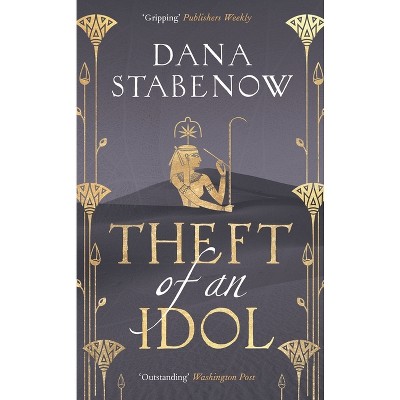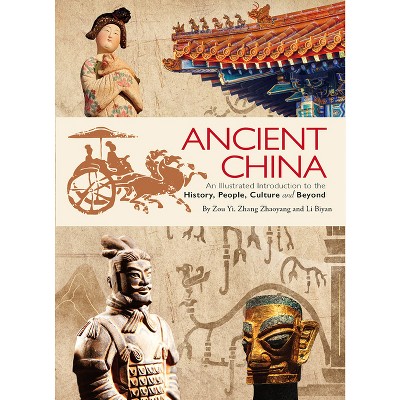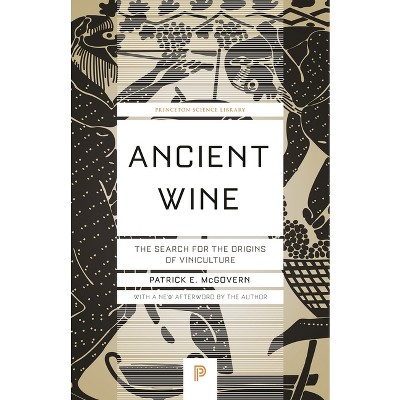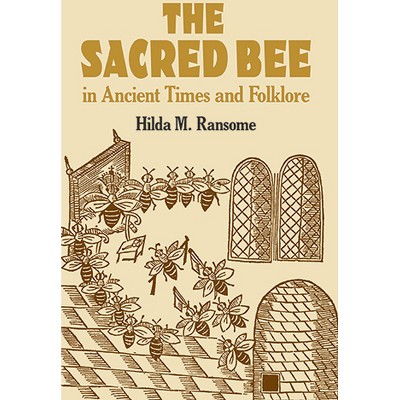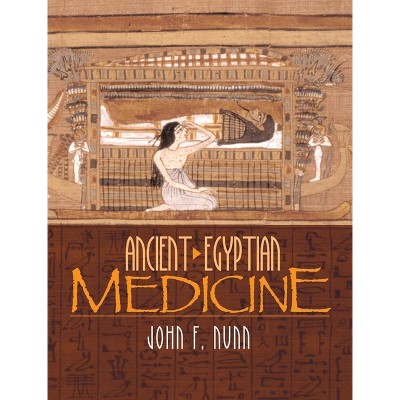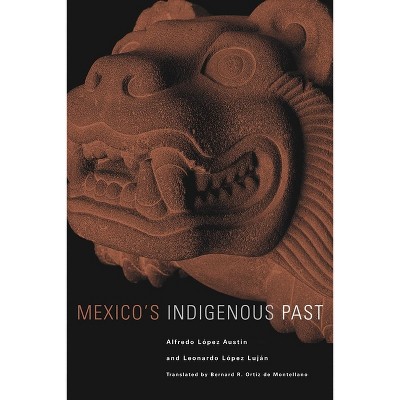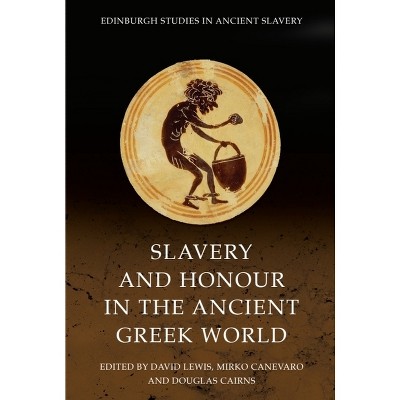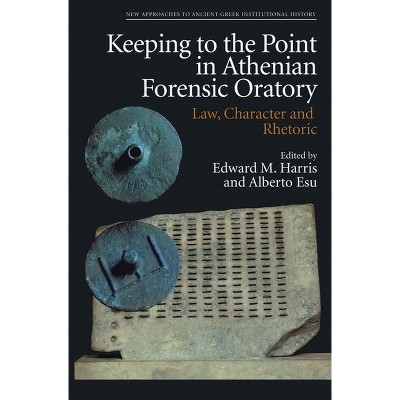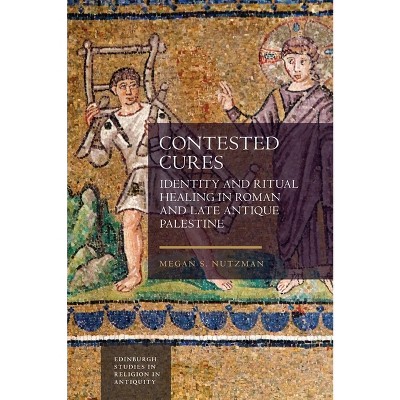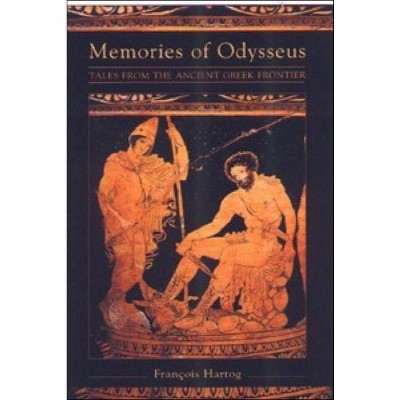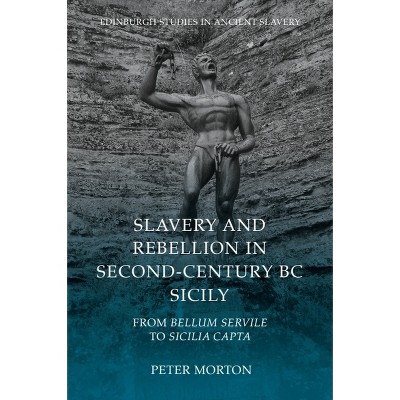Marginalised Populations in the Ancient Greek World - (Intersectionality in Classical Antiquity) by Carrie L Sulosky Weaver (Paperback)

About this item
Highlights
- Studies of the ancient Greek world have typically focused on the life histories of elite males as the group that has made the most distinct mark on ancient Greek literature, art and material culture.
- About the Author: Carrie L. Sulosky Weaver is a researcher associated with the Department of Classics at the University of Pittsburgh.
- 312 Pages
- History, Ancient
- Series Name: Intersectionality in Classical Antiquity
Description
About the Book
Explores literary, visual, material and biological evidence of marginality in the ancient Greek world.
Book Synopsis
Studies of the ancient Greek world have typically focused on the life histories of elite males as the group that has made the most distinct mark on ancient Greek literature, art and material culture. As a result, the voices of foreigners, the physically impaired, the impoverished and the generally disenfranchised have been silent, which has substantially complicated the creation of a historical narrative of these marginalised groups.
To address this lacuna, previous research has turned to the limited evidence found in literature and material culture to reconstruct societal attitudes toward disenfranchised peoples. This book departs from that approach by primarily considering the skeletal remains and burial contexts of the individuals themselves. Drawing upon literary, artistic, material and biological evidence, it sheds new light on groups of individuals who were typically relegated to the periphery of Greek society in the Late Archaic and Classical periods.
Offering the first comprehensive treatment of the biological evidence for marginality in the ancient Greek world, this book argues that intersectionality was the driving factor behind social marginalisation in the Late Archaic and Classical Greek world.
From the Back Cover
Explores literary, visual, material and biological evidence of marginality in the ancient Greek world Studies of the ancient Greek world have typically focused on the life histories of elite males as the group that has made the most distinct mark on ancient Greek literature, art and material culture. As a result, the voices of foreigners, the physically impaired, the impoverished and the generally disenfranchised have been silent, which has substantially complicated the creation of a historical narrative of these marginalised groups. To address this lacuna, previous research has turned to the limited evidence found in literature and material culture to reconstruct societal attitudes toward disenfranchised peoples. This book departs from that approach by primarily considering the skeletal remains and burial contexts of the individuals themselves. Drawing upon literary, artistic, material and biological evidence, it sheds new light on groups of individuals who were typically relegated to the periphery of Greek society in the Late Archaic and Classical periods. Offering the first comprehensive treatment of the biological evidence for marginality in the ancient Greek world, this book argues that intersectionality was the driving factor behind social marginalisation in the Late Archaic and Classical Greek world. Carrie L. Sulosky Weaver is a classical archaeologist associated with the Department of Classics at the University of Pittsburgh.Review Quotes
S.W.'s interdisciplinary study is innovative, the first bioarchaeological study of social marginalisation in the ancient Greek world. S.W. demonstrates an expert knowledge of bioarchaeology and conveys this well to a non-osteology specialist audience, presenting a useful synthesis for the state of play more broadly of the bioarchaeology of ancient Greece. This volume is a sound starting point for researchers to build from, as S.W. highlights areas for future research.--Stephanie Evelyn-Wright, University of Southampton "The Classical Review"
Sulosky Weaver presents a compelling and lively interpretation of the marginalized people in ancient Greece--their young, old, sick, rich, poor, and infirm--based on her extraordinary context-based investigation of their skeletal remains. The book is a must read for anyone interested in this remarkable setting and its people.
-- "Clark Spencer Larsen, Distinguished Professor of Anthropology, Ohio State University"The book does an excellent job in terms of its primary aim: to familiarize in a comprehensible way non-specialist readers with the nature of osteo-archaeological evidence and the techniques employed by specialists, the interpretations that can be deduced from the evidence and the methodological pitfalls, and the existing osteo-archaeological corpora that have been analysed so far. The author makes evident how much ancient historians can learn from this body of evidence; at the same time, it also illustrates the extent to which interpretations will need to develop further: how exactly should we interpret the surprising evidence that skeletons from the Laurion mines seem to share the same diet with those of Athens? Clearly, there is much to be learnt, and co-operation between historians and bioarchaeologists will enhance the value of the evidence.--Kostas Vlassopoulos, University of Crete "Greece & Rome"
About the Author
Carrie L. Sulosky Weaver is a researcher associated with the Department of Classics at the University of Pittsburgh. She is the co-editor (with R. M. Gondek) of The Ancient Art of Transformation: Case Studies from Mediterranean Contexts (Oxbow Books, 2019) and the author of The Bioarchaeology of Classical Kamarina: Life and Death in Greek Sicily (University Press of Florida, 2015).
